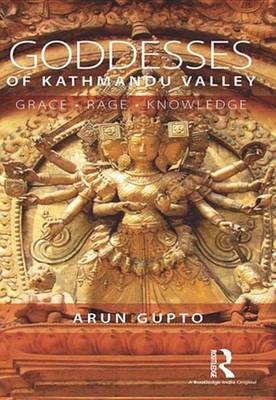Nepal and Himalayan Studies
1 total work
In South Asia goddesses are conceptualized and worshipped in a fascinating range of forms - from cosmic beings to bacterial manifestations, from human-like appearances to creatures with animal and insect semblances. This book maps the diverse identities of goddesses through metaphors of grace, rage and knowledge, and offers an in-depth insight into femininity, sexual politics, ritual worships, religion, ecology and gender. Grace manifests as motherly sublimity, warring protectors, and varying personifications of sexuality. Rage encapsulates the fearful aspects of goddesses and independent identities of women. Knowledge evokes associations with order, reason and intellect in conflating gendered binaries of body/mind and nature/culture. The volume explores how these deity attributes are expressed and embedded through anthropomorphic as well as inorganic forms of nature, beautiful women, multi-legged and many-armed animals, epistemic selves, demonic beings, glamorous personifications as also grotesque sub-humans.
A methodological combination of critical theory, mythological and philosophical concepts, along with popular ethnographic narratives and lived experiences, this monograph will greatly interest scholars and researchers of religious studies, cultural studies, folklore, art, literature, sociology and gender studies, especially those interested in Nepal and Hinduism.
A methodological combination of critical theory, mythological and philosophical concepts, along with popular ethnographic narratives and lived experiences, this monograph will greatly interest scholars and researchers of religious studies, cultural studies, folklore, art, literature, sociology and gender studies, especially those interested in Nepal and Hinduism.
